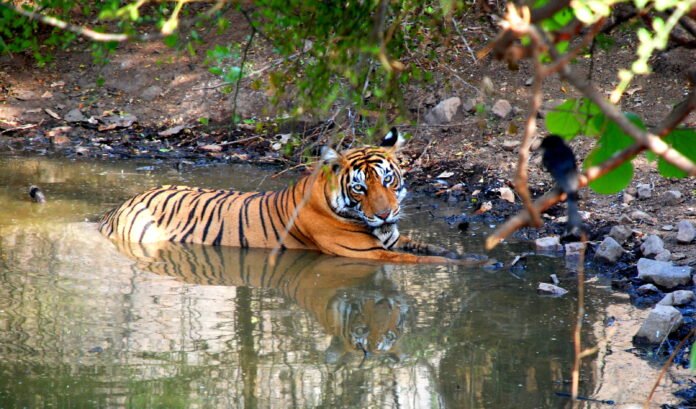Nestled in the heart of Rajasthan, Ranthambore National Park stands as a testament to India’s rich history and thriving biodiversity. This mesmerizing destination blends the grandeur of royal heritage with the untamed wilderness of its thriving wildlife sanctuary. Within its bounds, the historic Ranthambore Fort whispers tales of bygone eras while the surrounding park brims with the vibrant rhythm of nature. If you’re seeking an experience that merges luxury with adventure, consider staying at a Luxury Resort in Ranthambore for the perfect combination of comfort and wilderness.
The Legacy of Ranthambore Fort
Ranthambore Fort, perched atop a hill within the national park, is a UNESCO World Heritage Site. Built in the 10th century by the Chauhan dynasty, the fort served as a strategic military stronghold and later became a royal hunting retreat. With its massive gateways, ancient temples, and panoramic views of the park, it stands as a symbol of resilience and architectural brilliance.
Walking through its winding paths, visitors can explore temples dedicated to Lord Ganesha, Shiva, and Ramlalaji. The fort also boasts a fascinating array of ruins, palaces, and reservoirs that evoke the grandeur of its royal past. Its location, surrounded by dense forests and picturesque landscapes, amplifies its allure, offering visitors a unique blend of history and nature.
Ranthambore National Park: A Wildlife Haven
The national park, once the royal hunting grounds of the Maharajas of Jaipur, is now a protected sanctuary renowned for its tiger population. Spread over 1,334 square kilometers, it is home to a variety of flora and fauna, making it one of India’s premier wildlife destinations. The park’s dry deciduous forests, interspersed with grasslands and lakes, provide a perfect habitat for its inhabitants.
Ranthambore National Park is famed for its majestic Bengal tigers, often spotted lounging in the open or near water bodies. The thrill of encountering these magnificent creatures in their natural habitat is unmatched. Apart from tigers, the park shelters leopards, sloth bears, sambar deer, and over 300 species of birds, making it a paradise for wildlife enthusiasts and photographers.
Exploring the Park: Safaris and Adventures
The best way to experience Ranthambore’s wilderness is through a guided safari. The park offers both jeep and canter safaris, allowing visitors to delve deep into the core zones where wildlife sightings are frequent. These safaris are not only about spotting animals but also about soaking in the raw beauty of the terrain, with its rocky ridges, dense forests, and serene lakes.
For couples seeking an unforgettable romantic escape, the 2N 3D Couple Package Ranthambore is an excellent choice. This package combines thrilling safari adventures with the comfort of luxurious accommodations, ensuring a memorable experience.
Birdwatching and Nature Walks
Beyond its charismatic tigers, Ranthambore is a haven for birdwatchers. The park’s lakes, such as Padam Talao and Rajbagh Talao, attract a variety of migratory and resident birds. From the vibrant Indian pitta to the graceful painted stork, birdwatchers are in for a treat.
Nature walks, guided by experienced naturalists, offer a more intimate exploration of the park’s ecosystem. These walks allow visitors to observe the smaller wonders of the forest, such as unique plants, insects, and reptiles, while learning about the delicate balance of this biodiverse haven.
The Best Time to Visit Ranthambore
Ranthambore National Park is open to visitors from October to June, with each season offering a distinct experience. The winter months (November to February) are ideal for wildlife sightings, as animals are more active during the cooler weather. Summers, although hot, increase the chances of spotting tigers near waterholes.
Monsoons bring lush greenery to the park, although it remains closed for safaris during this period. However, the fort remains accessible, and the rain-washed landscapes make for a stunning backdrop.
Local Culture and Cuisine
Ranthambore is not just about wildlife and history; it is also a window into the vibrant culture of Rajasthan. The local villages near the park showcase traditional Rajasthani art, crafts, and cuisine. Visitors can savor authentic delicacies like dal baati churma, gatte ki sabzi, and kachori, often prepared with a touch of local spices.
Artisans in the region craft intricate textiles, pottery, and jewelry, which make for perfect souvenirs. Engaging with the local community adds depth to the overall experience, offering a glimpse into their way of life.
Responsible Tourism and Conservation
Visitors to Ranthambore play a vital role in supporting conservation efforts. The park authorities and local communities work tirelessly to protect its delicate ecosystem and endangered species. Travelers are encouraged to follow sustainable practices, such as avoiding littering and respecting wildlife, to ensure the preservation of this natural treasure.
Conclusion: A Royal Rendezvous with Nature
Ranthambore Fort and National Park encapsulate the essence of Rajasthan’s royal heritage and natural splendor. Whether exploring the ancient fort or embarking on a thrilling safari, the experience is nothing short of magical. Staying at a well-appointed resort enhances the journey, allowing you to immerse yourself in comfort while reconnecting with nature. For those seeking a blend of romance, adventure, and luxury, Ranthambore offers a getaway that promises memories to last a lifetime.


